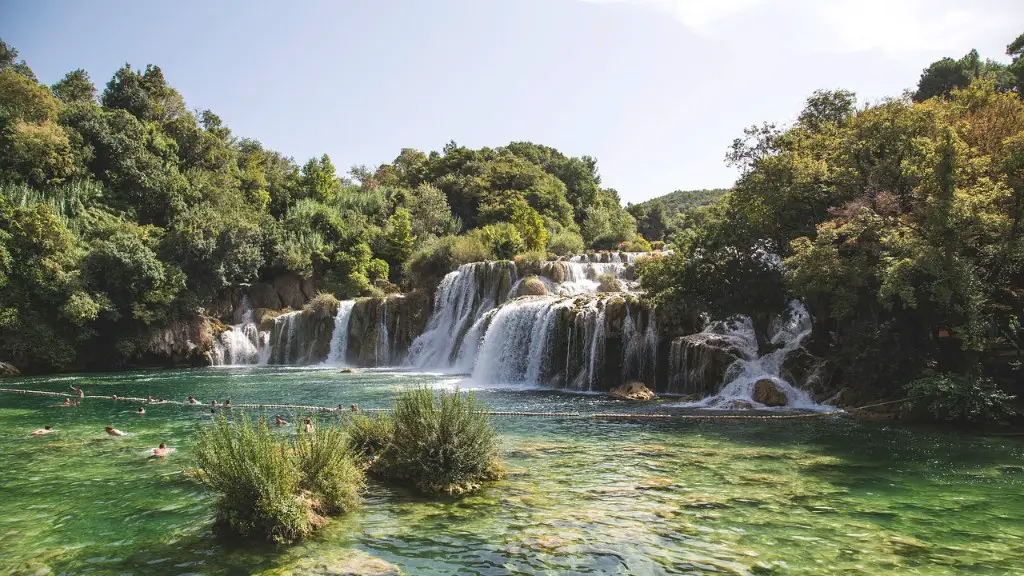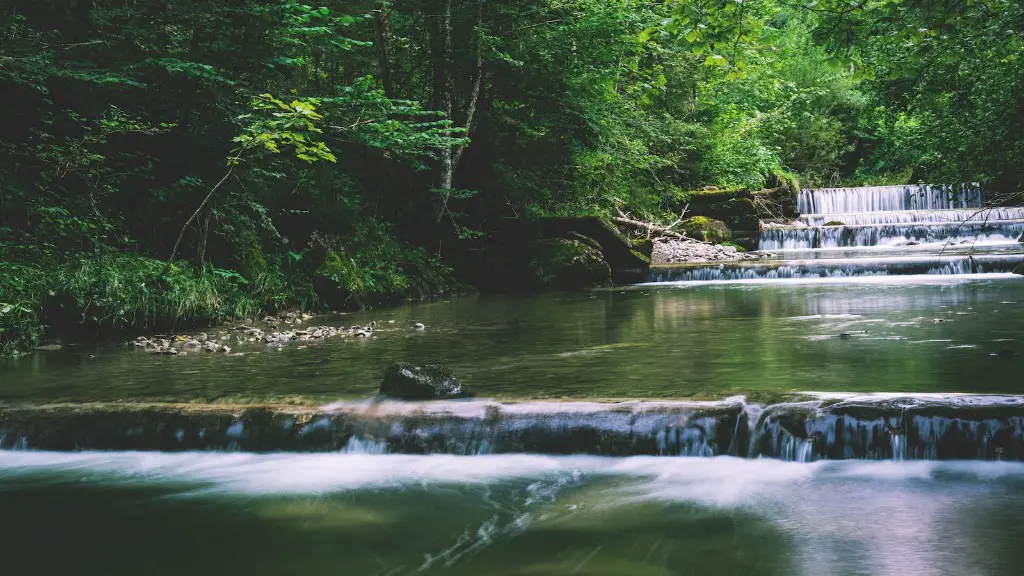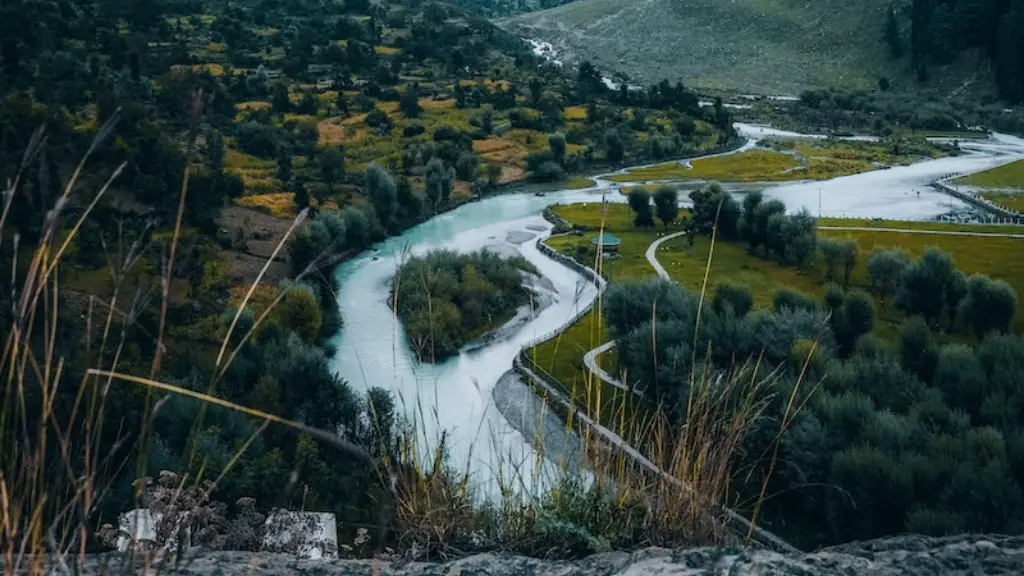The Mississippi River is more than just one of the most iconic rivers in the United States, it is also a massive transportation network, home to many species of plants, fish and birds, an economic powerhouse, and a source of recreation for many. From its humble beginnings as an unassuming river in North America, the Mississippi River has evolved over the years, playing an integrated role in the lives of those that inhabit its banks.
Historically, the Mississippi River has been used for many purposes, including but not limited to fishing, irrigation, transportation, recreation, and more. The ancient indigenous peoples of North America used the river for spiritual and recreational purposes, including fishing and ceremonies, while the early European settlers would use the river mainly as a transportation route within the New World. As the area grew and changed, the Mississippi River would eventually become a critical mode of trade and transportation, allowing goods to be delivered and commerce to move faster than ever before. During the 19th century, thousands of boatmen took to the waters, carrying goods and passengers between destinations while providing a source of employment for many of the inhabitants of the area.
As the nation industrialized, so too did the Mississippi River. Factories and mills sprang up along the riverbank, providing jobs, commerce, and revenue to many of the surrounding communities. Some experts believe that without the Mississippi River’s integral role in transportation, the United States would have never been able to build and expand the way it did.
The modern uses of the Mississippi River are numerous. From transportation shipping to hydroelectric power and from leisure activities to drinking water supplies, the Mississippi River is an essential part of modern life. Cities, towns, and homes rely on the river for their needs and actively work to preserve and protect it. Fishing, boating, and hunting are all popular activities for those interested in exploring the diverse wildlife living along the Mississippi River.
Moreover, the Mississippi River is essential for commercial navigation. Every year, hundreds of barges and vessels carrying oil, coal, and other goods travel up and down America’s largest river. The US Army Corps of Engineers is responsible for the maintenance and dredging of the Mississippi River, which ensures that the waterway is navigable for ships and barges.
The Mississippi River also serves a variety of recreational needs. With hundreds of parks and scenic shorelines, the Mississippi River is the perfect destination for camping, fishing, boating, hiking, and more. People flock to the banks of the Mississippi River to witness its beauty and explore its history. Every year, thousands of visitors come to the banks of the Mississippi to get a taste of the true Great American adventure.
The Mississippi River is not only an important part of American history, it is an important source of life, employment, commerce, recreation, and more. With advances in technology, the Mississippi River will continue to be used for many purposes by those living along its bank’s in the future.
Environmental Impact of the Mississippi River
The environmental impact of the Mississippi River is undeniable, both on its banks and faraway places. For centuries, people have relied on the waters of the Mississippi for sustenance, livelihoods, and transportation, but throughout the years, industrial and agricultural runoff has taken its toll. Widespread pollution, nutrient overload, and habitat destruction are all issues faced by the Mississippi today.
The presence of pollutants such as fertilizer runoff, animal waste, and industrial chemicals has created dead zones downstream, where most of the generated toxins accumulate. Nutrients from these pollutants often end up in urban and agricultural areas, encouraging algal growth that can suffocate aquatic life. Furthermore, runoff caused by large amounts of rain can lead to flooding, causing erosion along riverside landscapes and adding even more pollutants to already-polluted waters.
While much of the pollution and destruction to the Mississippi has already been done, governments, companies, and the public have taken action to restore the river to its former glory. Increased public awareness of the Mississippi’s important ecosystems and the dangers posed by pollution have led to improved management of the river. The US government has also invested in various clean-up projects in recent years, improving water quality and promoting conservation efforts.
However, there is still much work to be done in order to restore the ecological balance of the Mississippi River. Through collaboration and dedication, it is possible for the Mississippi to return to its former grandeur, benefiting all who live, work, and recreate around its banks.
Economic Impact of the Mississippi River
The Mississippi River has had a powerful economic impact for centuries on its inhabitants, providing them with the transportation routes, opportunities, and wealth necessary to thrive. In regards to the transportation industry, the river has been responsible for the growth of many cities in the Midwest, allowing easy access to resources, enabling effective distribution of goods, and connecting otherwise isolated regions.
The river is also responsible for creating jobs and providing employment opportunities, with fishing and shipping amongst the more popular occupations along the banks. These activities account for billions in direct economic output each year, while supporting millions of jobs in the US alone. The revenue generated by these activities goes directly towards economic growth and the advancement of many communities.
Furthermore, the Mississippi is housed by a number of important hydropower projects that produce a significant amount of clean energy. These projects are not only financially lucrative but also create jobs and provide a much-needed clean energy resource to the nation. Finally, the Mississippi River also has a number of recreational benefits, with fishing, boating, and swimming being popular activities for visitors and locals alike.
Overall, it is clear that the Mississippi River is an important economic driver for many communities along its banks. From transportation and recreation to hydropower and tourism, the Mississippi is responsible for making a positive contribution to many aspects of the global economy.
Wildlife of the Mississippi River
The Mississippi River is home to a vast array of wildlife, from tiny fish to soaring bald eagles. Various species of birds, mammals, amphibians, reptiles, and fish inhabit the banks of the Mississippi, making the river an important source of life and biodiversity.
Fish is the most abundant form of wildlife in the Mississippi River and is an important food source for many species. Species of fish include bluegill, bass, carp, catfish, and many more. Some of these fish are also caught as a popular pastime, from as far upstream as Minnesota all the way to the Gulf of Mexico. Moreover, eels, turtles, frogs, and salamanders all inhabit the Mississippi, each with its own unique set of adaptations and behaviors.
Additionally, a variety of large and small mammals live along the Mississippi as well, including muskrats, river otters, beavers, and raccoons. These mammals often feed on fish, plants, and other creatures, while providing important ecosystem services such as controlling flooding and fertilizer runoff. Finally, the Mississippi is also home to a number of iconic birds, from egrets and herons to kingfishers, bald eagles, and the majestic blue crane.
All in all, the Mississippi River is a place of unparalleled biodiversity, where dozens of species peacefully coexist and provide vital services to the environment. From small invertebrates to iconic mammals, birds and fish, the wildlife of the Mississippi River is a fundamental part of its history and culture.
Conservation of the Mississippi River
Efforts to conserve the Mississippi River have been ongoing for years, but in recent times the focus has expanded to include more diverse and comprehensive conservation efforts. These efforts are geared towards protecting the river and its inhabitants, while encouraging responsible and sustainable uses of the river.
The US Fish and Wildlife Service has been on the forefront of Mississippi River conservation, focusing on improving and restoring the river’s habitats. The agency promotes projects that reduce pollution and improve water quality while also advocating for fish passage, improved boat navigation, and habitat restoration. At the same time, educational initiatives have been put in place to increase public knowledge and understanding of the importance of the Mississippi River to both wildlife and people.
Additionally, many governments and non-profit organizations have implemented numerous clean-up and restoration actions along the river. Such actions include removing debris from the river, planting buffer areas along the banks, creating wetlands, and more. These efforts help to promote healthy habitats for the fish and wildlife of the river and protect it from future pollution or destruction.
From government initiatives to public awareness campaigns, conservation efforts in the Mississippi River continue to make a positive impact. Through collaboration and innovation, it is possible for future generations to continue to benefit from and enjoy the many uses that the river has to offer.





